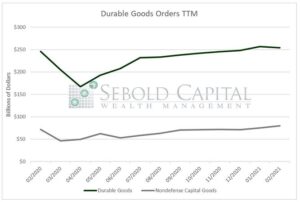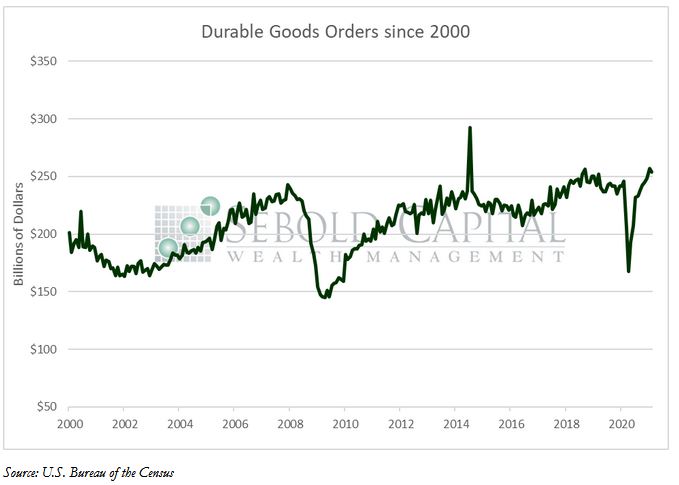 Durable goods orders, which are orders to buy products that are expected to last at least three years, indicate how busy factories will be in the near future. As the name suggests, durable orders provide a look into demand for equipment along with other big-ticket purchases, such as vehicles and appliances. An increase in capital spending and consumer purchases indicates an increase in business investment and personal consumption in GDP.
Durable goods orders, which are orders to buy products that are expected to last at least three years, indicate how busy factories will be in the near future. As the name suggests, durable orders provide a look into demand for equipment along with other big-ticket purchases, such as vehicles and appliances. An increase in capital spending and consumer purchases indicates an increase in business investment and personal consumption in GDP.
In February, orders for durable goods declined by 1.1% to $254.0 billion, according to the U.S. Bureau of the Census’ advance estimate. However, orders for nondefense capital goods—which are considered to be an indicator of future business spending plans—increased by 5.6% last month to $79.6 billion. Capital good orders have grown by 11.3% over the past year and have surpassed their pre-pandemic levels by a large margin.
Orders for long-lasting manufactured goods fell last month for the first time since the start of the pandemic. As with several other economic indicators, last month’s severe winter weather appears to have taken a toll on manufacturers’ orders. Likewise, shipments of manufactured durable goods decreased by 3.5% in February, while inventories increased by 0.7%. However, this setback is likely to be temporary, as fiscal stimulus and a recovering economy are likely to boost manufacturing activity in the upcoming months.

March 24, 2021
